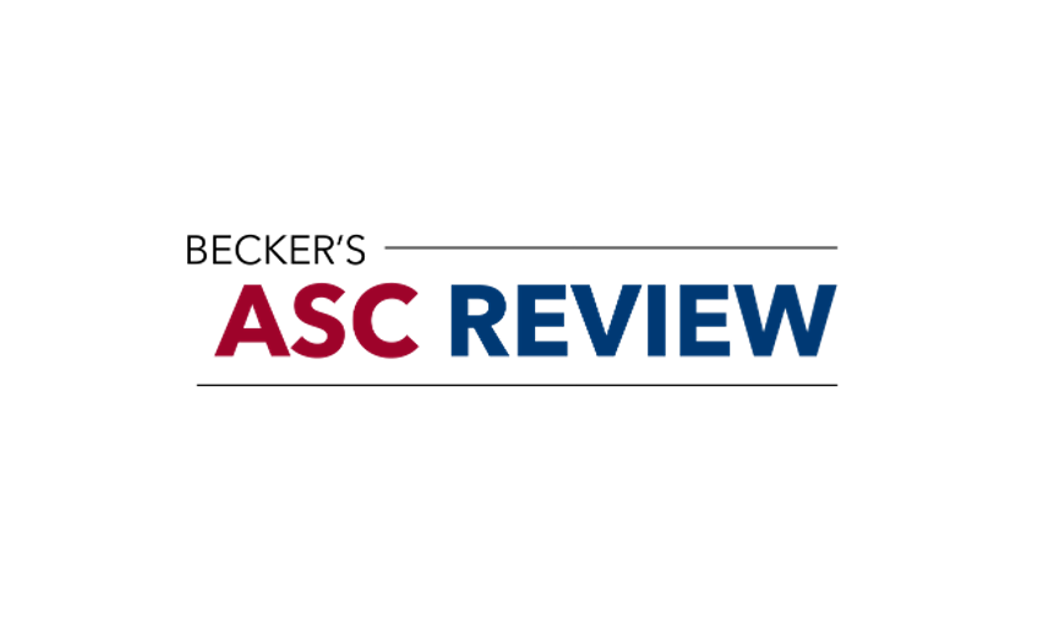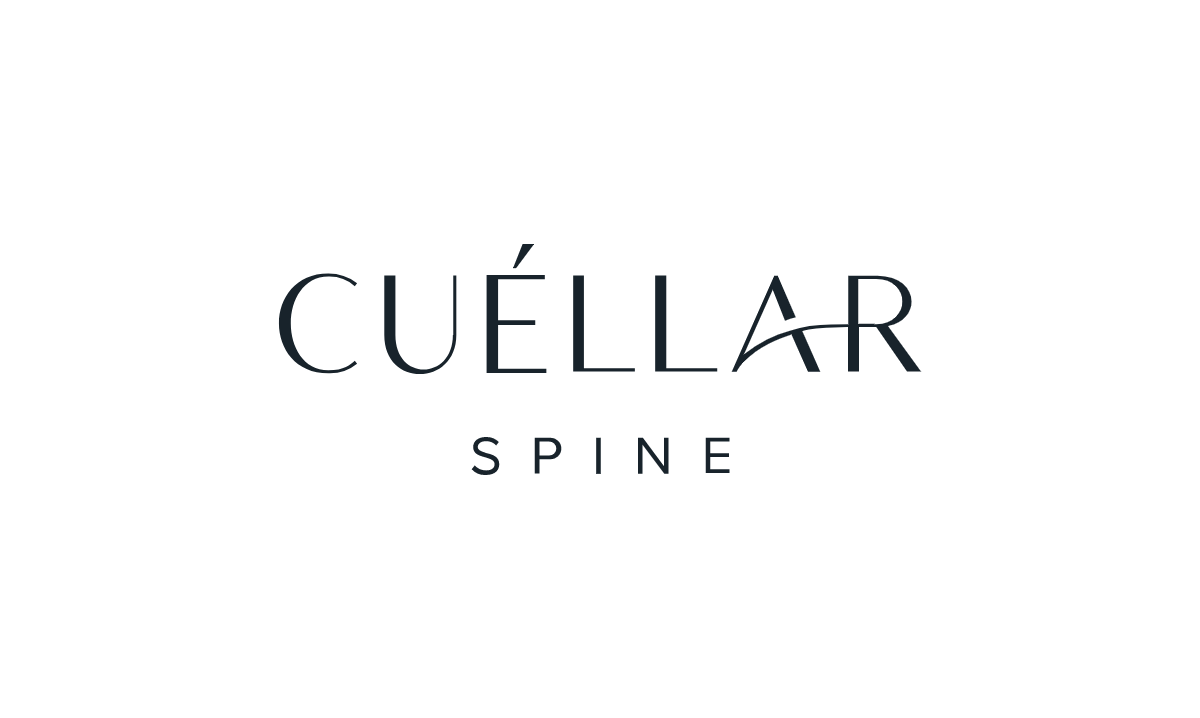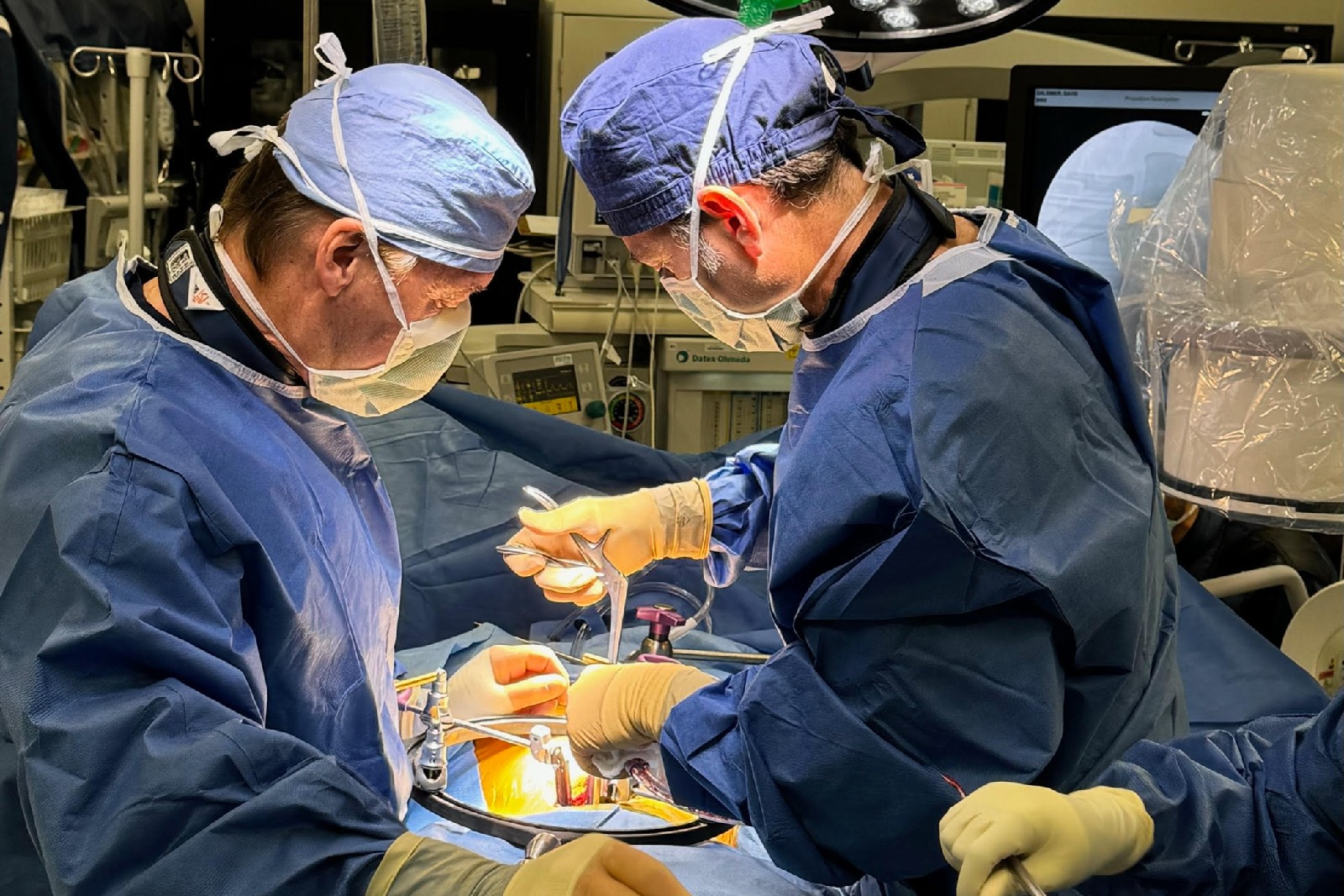Top 5 Treatments for a Herniated Disc Offered in Palm Beach County

If you’re among the residents of Jupiter, Miami, or anywhere in beautiful Palm Beach County, dealing with a herniated disc can be a real pain – quite literally. The good news is that you don’t have to navigate this challenge alone. In this blog post, shared from Dr. Cuellar, we’ll explore the top 5 treatments for a herniated disc, all while considering the local resources and healthcare options available right here in our community.
Herniated discs can be a result of trauma, an accident, heavy lifting or just part of the disc degenerative aging process. A disc herniation occurs when the inner aspect of the disc, called the nucleus pulposus, protrudes out through a hole in the outer layer, called the annulus fibrosus. Disc herniations can happen in any part of the spine – cervical (neck), thoracic (mid-back) or lumbar (low back) spine.
When a disc herniation occurs in the neck it can cause nerve compression and/or spinal cord compression. Nerve compression can cause numbness, weakness and/or pain in the shoulders, arms, hands and fingers. If the spinal cord is compressed it can cause minor symptoms which may be hard to detect such as balance or gait disturbance and fine motor skill loss such as trouble buttoning a shirt or writing. It can also cause more severe problems such as arm or leg weakness or even paralysis if the compression is severe enough.
A disc herniation in the thoracic spine can cause anything from pain radiating into the chest wall to weakness, numbness or paralysis in the legs. A disc herniation in the lumbar spine or low back can cause back pain or radiating pain into the legs if a nerve is compressed and can even cause numbness and weakness of the legs, ankles or feet. Nerve root or spinal cord compression can cause permanent damage if left untreated as quickly as 24-48 hours.
#1 Microdiscectomy
When a patient has pain in the spine from a herniated disc that has persisted for more than 6 weeks, and they have difficulty doing normal activities, they may want to consider surgery. (If you have weakness or constant numbness however, surgery may be required immediately rather than waiting the typical 6 weeks). The most common surgical procedure to treat this condition is a microdiskectomy.
A discectomy is the surgical removal of abnormal disc material that presses on a nerve root or the spinal cord. The procedure involves removing a portion of an intervertebral disc with the aid of a microscope. During this procedure, a very small incision is made near the injured site, and a surgeon will use a microscope to manipulate the disc. Not every herniated disc requires surgical intervention, however. Alternate treatments may include medication and/or physical therapy.
#2 Disc Replacement Surgery
Depending on the patient’s condition, a total disc replacement (TDR) surgery (also known as artificial disc replacement or ADR) may be required. During this procedure the damaged disc is replaced with an artificial one. While many patients find their condition improves with physical therapy and medication, long-term and long-lasting pain relief may only truly be attained with surgical intervention. A total disc replacement is a great option for patients who suffer from a herniated disc. This procedure also helps patients who suffer from radicular syndrome and other cervical spine conditions.
#3 Conservative Treatments for Herniated and Slipped Discs
Conservative treatments for herniated discs encompass a range of non-surgical approaches that focus on managing pain, reducing inflammation, and facilitating the natural healing process. These treatments are typically recommended as the first line of defense, as they offer a less invasive alternative to surgery while still aiming to alleviate symptoms and improve function.
Rest and Activity Modification
Rest is often the first line of defense when it comes to treating herniated discs conservatively. By allowing the body to heal naturally, rest helps reduce inflammation and pressure on the affected disc. During this time, it’s essential to avoid activities that exacerbate the pain, such as heavy lifting or rigorous exercise. Instead, gentle movements and stretches can be incorporated to maintain mobility and prevent muscle stiffness.
Physical Therapy
Physical therapy involves exercises and targeted stretches that strengthen the surrounding muscles, enhance flexibility, and promote proper spinal alignment. This is a very reliable non-surgical option to treat herniated discs. With adequate therapy, many patients feel results within a short span of time.
Pain Medication and Anti-Inflammatory Drugs
Herniated discs can cause radiating pain that is often treatable with medications. Medications such as nonsteroidal anti-inflammatory drugs (NSAIDs), muscle relaxants, and pain relievers may be prescribed to manage pain and reduce inflammation.
Epidural Steroid Injections
Epidural steroid injections are a quick resolution to the pain that a patient can be suffering from due to a herniated disc. This procedure involves injecting a corticosteroid medication directly into the epidural space surrounding the affected nerve root. The steroid helps reduce inflammation and alleviate pain, providing targeted relief to the specific area affected by the herniation. Injections also last longer than some medications. An alternative to steroids is A2M injections which harness the body’s own powerful anti-inflammatory proteins.
Lifestyle Modifications and Wellness Programs:
In Jupiter, part of vibrant Palm Beach County, you have access to an array of fitness studios, yoga centers, and wellness programs that can complement your herniated disc treatment plan. Regular exercise, a balanced diet, and stress management techniques can contribute to long-term spinal health. However, since each herniated disc case is unique, it’s crucial to consult with local spine specialists, like Dr. Jason M. Cuéllar, to determine the most suitable treatment plan for your specific condition. Jupiter boasts a wealth of healthcare professionals and resources dedicated to spine health, ensuring you can proactively pursue relief and regain your active lifestyle.
Other Treatments
Additionally, lifestyle modifications, including weight management, adopting ergonomic practices, and avoiding activities that exacerbate symptoms, play a crucial role in the conservative treatment approach. By exploring these conservative treatments, individuals with herniated discs have the opportunity to take a proactive role in their recovery journey.
#4 Chiropractic Care & Acupuncture
Chiropractic Solutions for Herniated Disc
Chiropractic care focuses on the relationship between the spine and the nervous system, recognizing that a healthy spine is crucial for overall well-being. When it comes to herniated discs, chiropractors employ a range of techniques to alleviate pain, reduce inflammation, and restore proper spinal alignment. Some patients can begin to feel relief from the pain caused by a herniated disc with the aid of a chiropractor in a matter of weeks.
Manual adjustments, often referred to as spinal manipulations, are one of the core treatments used. By applying controlled force to the affected area, chiropractors can gently realign the spine, relieving pressure on the herniated disc and surrounding nerves. Additionally, chiropractic care may incorporate other therapies such as spinal decompression, massage, and rehabilitative exercises to further enhance healing and strengthen the supporting muscles. Adjustments made by a chiropractor over a month-long period, coupled with targeted acupuncture sessions can help to relieve the pain a patient feels from a herniated disc.
Acupuncture for Herniated Disc
Acupuncture, an ancient Chinese healing practice, operates on the belief that imbalances in the body’s energy, known as Qi, can lead to various health conditions. Acupuncture is often helpful for treating post-operative pain associated with herniated discs.
By inserting thin needles into specific points along energy pathways called meridians, acupuncturists aim to restore the harmonious flow of Qi. In the context of herniated discs, acupuncture can help alleviate pain, reduce inflammation, and promote natural healing. The placement of needles around the affected area prompts the body to release endorphins, which act as natural painkillers, while also stimulating blood circulation to facilitate tissue repair.
Acupuncture provides short-term relief from pain caused by a herniated disc, but it can also provide a long-term reduction of inflammation, which helps to support healing in the region. This process does not eliminate the underlying condition, but it does provide pain relief.
#5 Alternative Therapies & Options
Some additional non-surgical options such as yoga, massages, pilates and strength and flexibility training also help to provide relief from pain caused by a herniated disc. There are also additional surgeries available to treat this condition, such as spinal fusion surgery.
Yoga and Pilates for Strength and Flexibility
Yoga, an ancient practice that combines physical postures, breathing techniques, and meditation, has become increasingly popular as a complementary therapy for various musculoskeletal conditions, including herniated discs. There are certain yoga poses that are commonly used to treat a herniated disc, such as “makarasana” pose. The gentle stretching and strengthening movements in yoga help improve flexibility, posture, and spinal alignment.
Similar to yoga, Pilates is a low-impact exercise method that emphasizes core strength, flexibility, and body awareness. Through a series of controlled movements and specialized equipment, Pilates aims to improve stability, balance, and posture. By strengthening the deep muscles surrounding the spine, Pilates can provide support to the herniated disc, reducing pain and enhancing function. Moreover, the emphasis on proper alignment and movement patterns in Pilates can help prevent further injury and promote long-term spinal health.
Massage Therapy for Pain Relief and Relaxation
Massage therapy offers a hands-on approach to alleviate pain and discomfort associated with a herniated disc. Skilled therapists can target affected areas, applying various techniques like Swedish massage, deep tissue massage, and trigger point therapy to reduce muscle tension, increase blood flow, and promote relaxation.
Spinal Fusion Surgery
Spinal fusion surgery is when a surgeon bonds two vertebral bodies together in order to prevent movement, which is often the “rubbing” that causes pain. Spinal fusion is generally considered when conservative treatments fail to provide relief or instability exists in the spine. Although patients can opt for a spinal fusion surgery to treat a herniated disc, the problem with fusion is it may accelerate degeneration of the adjacent segment and make it more likely for the patient to need additional spine surgery in the future compared to after a total disc replacement is performed. A microdiscectomy or laminectomy are also preferred treatments for a herniated disc.
Read more about other alternatives to spinal fusion offered by Dr. Cuéllar in Palm Beach County, Miami and Southern Florida.
FAQs
- What is the best treatment for herniated discs in the neck?
Surgical treatment depends on the particular situation and patient. A microdiscectomy may be the best surgical option for some situations whereas for others an artificial disc replacement may be best. Physical therapy, medication and rest are also the best non-surgical treatments for herniated discs in the neck or low back region. - Can lifestyle modifications, such as exercise and diet, help manage a herniated disc?
Exercise, diet and lifestyle modifications benefit managing the impact of a herniated disc. For some patients, these changes may be minor or transform one’s life for the better. - How long is the recovery period after herniated disc surgery, and what can I expect during that time?
Most patients begin to feel they can return to their normal routine approximately 4-6 weeks after surgery to treat herniated discs, but this depends on the patient and the exact surgery that was performed. - What are the most common symptoms of a herniated disc?
The most common symptoms of a herniated disc are: having pain in the back, arm, foot or leg, as well as numbness in the hands and feet, and a stiff neck or low back. However, herniated discs sometimes show no symptoms.
Herniated discs can significantly impact an individual’s quality of life, making effective and timely treatment crucial. Conservative treatments, such as rest, activity modification, physical therapy, pain medication, and epidural steroid injections, offer non-invasive approaches to managing herniated discs, with surgery being a last-resort option. Furthermore, alternative therapies like yoga, pilates, and massage therapy can contribute to pain relief, improved flexibility, and strengthening of the supporting muscles. These practices emphasize proper alignment, gentle stretching, and relaxation techniques, all of which can benefit individuals with herniated discs.
It is important to note that each person’s condition is unique, and the most appropriate treatment approach may vary. Book your consultation with Dr. Cuellar to discover the best course of treatment for your herniated disc.
By exploring the range of treatments available, individuals with herniated discs have the opportunity to actively participate in their recovery journey. Whether through conservative treatments, alternative therapies, or surgical interventions, relief from pain and improved quality of life are achievable goals. Remember, seeking early treatment and adopting a comprehensive approach to care can pave the way for a healthier and pain-free future.
More News & Insights from Cuéllar Spine
Exploring the Success Rates and Benefits of Laminectomy Without Fusion Surgery
Lumbar disc replacement surgery offers a promising alternative to traditional treatments for debilitating back pain and limited mobilit
The State of Outpatient Spine Surgery in 4 Studies
Outpatient spine surgery is growing, and its outlook suggests the trend will likely continue. Here are four studies illustrating the st
The Pros and Cons of Lumbar Disc Replacement (Also known as Total Disc Replacement (TDR), Total Disc Arthroplasty (TDA), or Artificial Disc Replacement (ADR))
Lumbar disc replacement surgery offers a promising alternative to traditional treatments for debilitating back pain and limited mobilit
10 Signs You May Need Revision Spine Surgery
Revision spine surgery, also known as secondary spine surgery, plays a crucial role in addressing persistent or recurrent spinal condit
Lumbar Total Disk Replacement Device Removals and Revisions Performed During a 20-Year Experience with 2141 Patients
This was a retrospective study with prospective patient contact attempted to collect current data.
36-Year-Old Male with History of Neck Pain
36-Year-Old Male with History of Neck Pain Radiating Into Both Shoulders, Numbness in Radial 3 Fingers of Both Hands
Problems with Artificial Disc Replacement
Artificial disc replacement (ADR), also known as total disc replacement (TDR), has emerged as a revolutionary approach in the field of
Top 5 Ways a Spinal Surgeon Can Help with Neck Pain
It is easy to take the movement in our necks for granted - and yet, when we are in pain, our neck flexibility can become extremely limi
ADR Spine Announces the Inclusion of Four Surgeons to Its National Top Doctors in Arthroplasty Program
ADR Spine Welcomes Elite Physicians to Top Doctors in Arthroplasty Program










